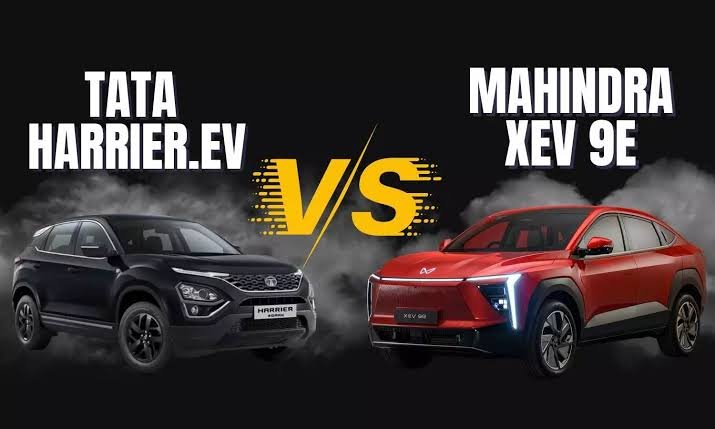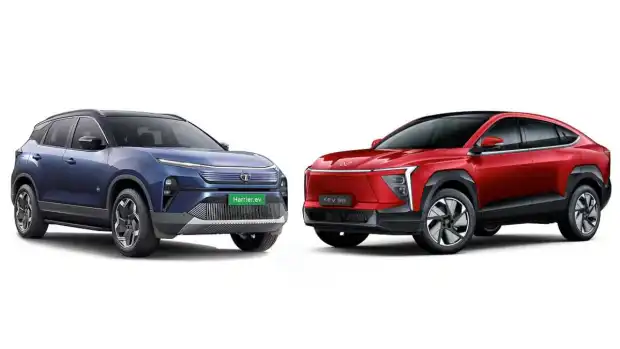India’s electric SUV market is heating up, and two homegrown giants, Tata Motors and Mahindra & Mahindra, are leading the charge with their flagship EVs: the Tata Harrier EV and Mahindra XEV 9e. Both have earned stellar 5-star Bharat NCAP safety ratings, making them top contenders for safety-conscious buyers. But which one truly takes the crown as India’s safest electric SUV? Let’s break it down.
Safety Showdown: Bharat NCAP Scores
Both SUVs have aced Bharat NCAP crash tests, scoring identical 32/32 for Adult Occupant Protection (AOP) and 45/49 for Child Occupant Protection (COP). They achieved perfect scores in frontal offset (16/16) and side movable deformable barrier tests (16/16), with “good” protection across all vital body areas. This parity sets a high bar, but subtle differences in safety features could tip the scales.
Tata Harrier EV: Safety with an Edge
The Harrier EV, launched in June 2025, boasts seven airbags, including a knee airbag, and Level 2 ADAS with over 20 functions like adaptive cruise control, lane keep assist, and autonomous emergency braking. Its unique 540-degree camera with Transparent Mode lets drivers see underbody terrain, ideal for off-roading. Features like summon mode for remote parking and an Acoustic Vehicle Alert System (AVAS) add practical safety perks.
Mahindra XEV 9e: Tech-Savvy Protection
The XEV 9e, built on Mahindra’s INGLO platform, matches the Harrier with six airbags and Level 2+ ADAS via Bosch, offering features like auto lane change and cross-traffic alerts. Its 5-star rating, earned in January 2025, includes a perfect AOP score and a strong COP performance. However, advanced safety tech like ADAS is limited to higher trims, potentially making it less accessible in base variants.
Performance and Powertrain Comparison
Beyond safety, these SUVs cater to different driving needs. The Harrier EV offers two battery options: 65 kWh (RWD, 234.7 bhp) and 75 kWh (AWD, 390 bhp), with a claimed range of up to 627 km. It sprints from 0-100 km/h in 6.3 seconds. The XEV 9e, with 59 kWh (228 bhp) and 79 kWh (282 bhp) RWD options, offers a slightly better range of 656 km but lacks AWD. It hits 0-100 km/h in 6.8 seconds.

Charging and Range
The XEV 9e supports faster 180 kW DC charging (20-80% in 20 minutes) compared to the Harrier EV’s 120 kW (25 minutes). For AC charging, the XEV 9e takes 8 hours, while the Harrier EV needs 10. The XEV 9e’s range edge makes it ideal for long drives, but the Harrier’s AWD option suits mixed terrains.
Features and Pricing
The Harrier EV starts at Rs 21.49 lakh, undercutting the XEV 9e’s Rs 21.90 lakh base price. The Harrier’s base variant includes terrain modes, V2V/V2L charging, and a 14.5-inch QLED touchscreen. The XEV 9e counters with a triple-screen setup, wireless Apple CarPlay, and a 663-litre boot (vs. Harrier’s 502 litres).
Comparison Table
| Feature | Tata Harrier EV | Mahindra XEV 9e |
|---|---|---|
| Bharat NCAP Rating | 5-Star (32/32 AOP, 45/49 COP) | 5-Star (32/32 AOP, 45/49 COP) |
| Airbags | 7 (including knee airbag) | 6 |
| ADAS | Level 2 (20+ functions) | Level 2+ (higher trims) |
| Battery Options | 65 kWh, 75 kWh | 59 kWh, 79 kWh |
| Range (Claimed) | Up to 627 km | Up to 656 km |
| Power (Max) | 390 bhp (AWD) | 282 bhp (RWD) |
| 0-100 km/h | 6.3 seconds | 6.8 seconds |
| Starting Price | Rs 21.49 lakh | Rs 21.90 lakh |
Which SUV Wins?
The Harrier EV edges out for its AWD option, extra airbag, and accessible safety features in base variants. The XEV 9e shines with faster charging and a premium interior. For rugged versatility, choose the Harrier EV; for urban elegance and range, the XEV 9e is your pick. Both are safety champs, so your choice depends on lifestyle needs.
